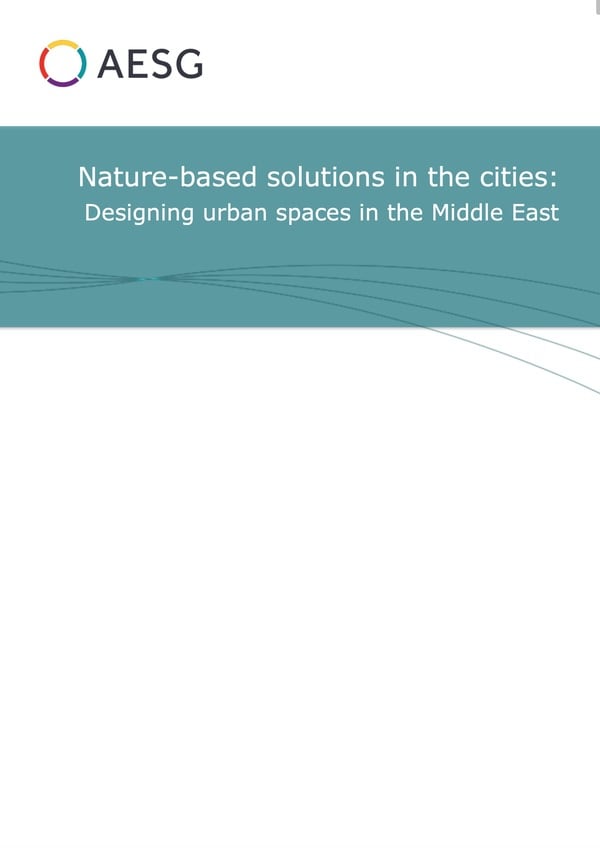
As part of the “Designing Resilient Urban Spaces in the Middle East” white paper series, this paper aims to construct the first body of knowledge in this region discussing the potential opportunities associated with nature-based solutions, through innovations inspired by nature in an urban environment.
Over the years, landscape architecture, spatial planning and urban design for large cities and smaller towns have witnessed radical changes to accommodate the ever-increasing populations living in the urban spaces.
The development of cities and towns have a multi-faceted and complex history. From ancient irrigation systems of the Mohenjodaro and Harappa civilizations in the Indian sub-continent (2200-1900 BCE) and Dujiangyan irrigation channels in Sichuan, China (256 BCE), to modern-day urban planning through evolving concepts of Ebenezer Howard’s Garden city movement (1903) and Le Corbusier’s Radiant cities (1933), urban architects and city engineers have had to continuously tackle unique planning and design challenges, by suggesting various adaptive and mitigative strategies which fit the location’s ecological and cultural practices. Similar insights and ingenious solutions are still relevant for today’s practitioners and policy makers (Yang and Li, 2016). However, urban planning in the 21st century faces previously unforeseen and unpredictable challenges. Whether it involves providing resilient landscapes for a changing climate (Bellinson and Chu, 2019; Lafortezza et al., 2018), addressing rapid urbanization (Buettner, 2015; Martins et al., 2018), planning adaptation for natural disasters (Bertilsson et al., 2019; Daniel et al., 2018; Yang et al., 2019), or undertaking ecological restoration of degraded urban areas (Hu et al., 2018; Wirth et al., 2018); the primary goal remains the same: building better, more resilient, sustainable, and prosperous urban spaces.
Currently, more than half of the world’s population lives in urban areas (Figure 1-1). According to recent estimates by the United Nations, 55% of the world’s population lives in urban spaces, and it is projected to increase up to 68% by 20501. The urban population of the world has grown rapidly from 751 million in 1950 to 4.2 billion in 2018. In addition to this, over 60% of the land projected to become urban by 2030 is yet to be built as per UN-Habitat’s research. These numbers could be much higher, as different nations use different definitions and terminologies to identify “urban” areas2. The challenge not only lies in building new and better cities to accommodate the billions of new urban citizens, but to also in adopting retro-fit technologies to upgrade existing urban centers.
1 United Nations, Department of Economic and Social Affairs, Population Division (2018). World Urbanization Prospects: The 2018 Revision, Online Edition.
2 Florida, 2018. Just How Much of the World Is Urban? (Last accessed on 15th August, 2019: https://www.citylab.com/life/2018/12/global-urbanization-un-majority-city-measure/577090/)
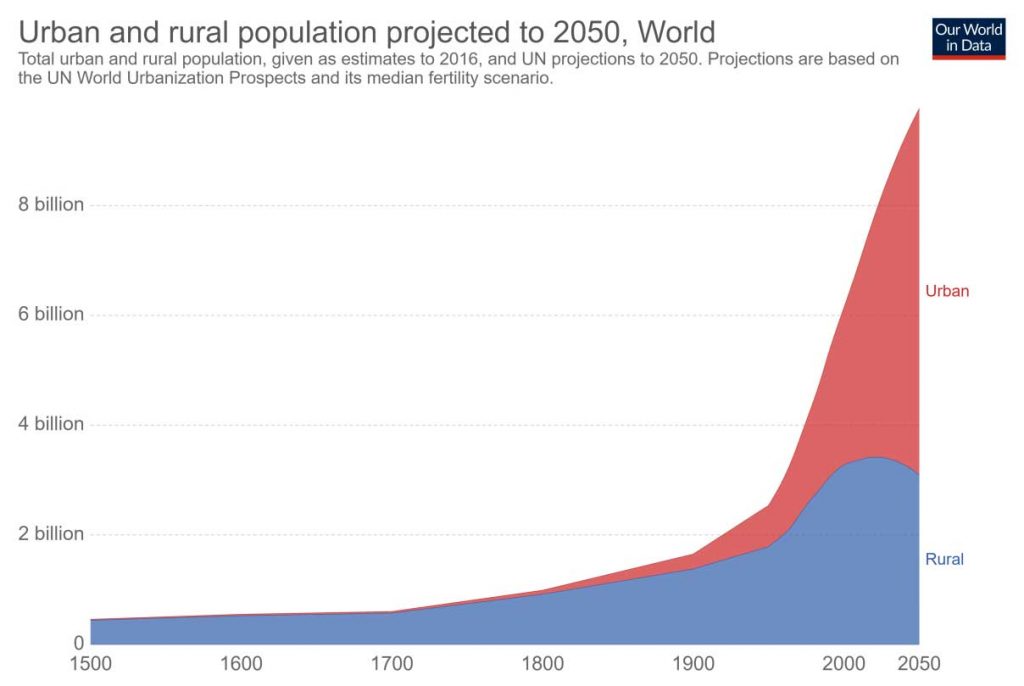
With countries urbanizing at an incredibly fast pace, and in many cases, with unplanned settlements, developing urban planning and designing frameworks that can guide the construction of new neighborhoods and city extensions is crucial for making cities resilient, sustainable, socially inclusive, and economically viable. It presents a rather generational opportunity to re-define the urban fabric of the cities, including social, economic and environmental components, as well as re-evaluate business models for urban investments and service deliveries3. Therefore, an important question needs to be answered for future global well-being: How can we address global change issues with contemporary new-age infrastructure solutions that can cater to a paradigm shift in urban designing and planning from an environmentally-sustainable context?
3 Clos, 2016. The opportunity to build tomorrow’s cities (Last accessed on 15th August, 2018: https://www.weforum.org/agenda/2016/04/urbanization-dr-joan-clos/)
Cities will be the first to experience climate change impacts; 70% of cities are already dealing with the effects of climate change, and nearly all are at risk4. More frequent and/or more extreme events such as, droughts, heavy rainfall, floods/flash floods, and storm surges, along with the rising temperatures and subsequent heat waves are expected to cause economic losses and social insecurity, while also, adversely affecting human health and well-being (Kabisch et al., 2017). The urban development challenge to climate change impacts is further compromised, as building infrastructure for fast-growing cities could release 226 gigatonnes of carbon dioxide by 2050, nearly four times the amount used to build the existing infrastructure (Figure 1-2).
Figure 1-2 Urban development challenge for building infrastructure (Source: Bai et al., 2018)
4 C40, 2012. Why Cities? Ending climate change begins in the city. (Last accessed on 25th August, 2018: https://www.c40.org/ending-climate-change-begins-in-the-city)
Therefore, as a response to adapt and/or mitigate the impacts of climate change, urban planners, traditionally, started relying on conventional engineering solutions for optimal land and resource management, to deal with the expanding urban population needs and requirements. However, it may not always be cost-effective, efficient or sustainable. More often, the practice of incorporating nature-based solutions are encouraged, as they are likely to address societal challenges from climate change and urbanization in a more realistic, practical and sustainable way (Calliari et al., 2019; Frantzeskaki, 2019; Nesshöver et al., 2017; Raymond et al., 2017). By using innovative solutions that are inspired and supported by natural elements around us, nature-based (or “green”) solutions are able to achieve environmental, societal and economic goals and objectives. With that background, the aim of this white paper is to dwell further into the concepts of nature-based solutions as they offer an array of co-benefits. We focus on including different case studies from around the world that illustrate how nature-based solutions can be applied in different contexts, to address various widespread issues.
With increasing research on the use of natural components and their multiple functions to address global change issues in urban areas, new approaches nurturing interdisciplinary knowledge in urban systems have led to the adoption of a series of metaphors in the course of its advancement (Escobedo et al., 2019). In an approximate chronological order, the similar yet distinct terms include, urban forests (UF), ecosystem services (ES), natural infrastructure (NI), green infrastructure (GI), and more recently, nature-based solutions (NbS).
Although, concepts of ES, NI, GI and NbS have similar roots in UF; GI reflects more on the engineered solutions addressing spatial patterns and connectively of natural networks in cities, NI reflects more on incorporating existing or restoring natural landscapes in the projects, and, ES refers to the multiple functions and services that benefit both nature and humans. More recent terminology, NbS, denotes an all-inclusive definition, encompassing comprehensive scope of applications that aim to resolve urban environmental, socio-political, and ecological challenges. In many instances, these terms are used interchangeably, which could add to the confusion for using the appropriate terminology. In this white paper, we focus on using examples reflecting concepts of NbS in urban landscapes.
As per the IUCN definition5,nature-based solutions (NbS) are defined as: ‘… actions to protect, sustainably manage and restore natural or modified ecosystems, which address societal challenges (e.g., climate change, food and water security or natural disasters) effectively and adaptively, while simultaneously providing human well-being and biodiversity benefits’
The European Commission (EC)6 defines nature-based solutions (NbS) as: ‘… solutions that are inspired and supported by nature, which are cost-effective, simultaneously provide environmental, social and economic benefits and help build resilience’. These solutions bring more, and more diverse, nature and natural features and processes into cities, landscapes and seascapes, through locally adapted, resource-efficient and systemic interventions.
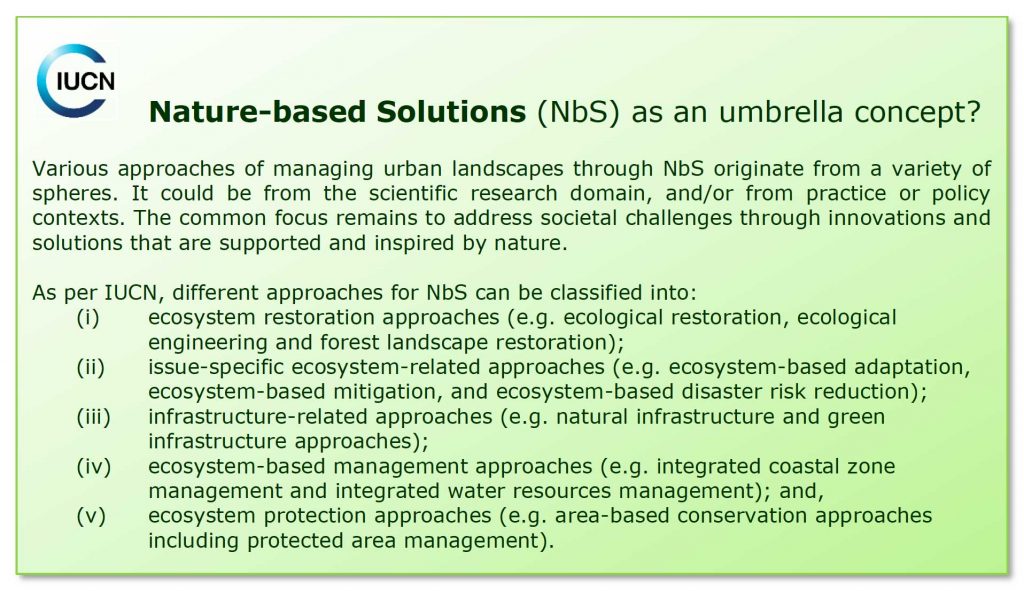
5 Cohen-Shacham, E., Walters, G., Janzen, C. and Maginnis, S. (Eds.), 2016. Nature-based Solutions to address global societal challenges. Gland, Switzerland: The International Union for Conservation of Nature (IUCN). xiii + 97 pp.
6 European Commission (EC), 2015. Towards an EU Research and Innovation policy agenda for Nature-Based Solutions & Re-Naturing Cities. Final Report of the Horizon 2020 Expert Group on ‘Nature-Based Solution and Re-Naturing Cities’.
Figure 1-3 shows a hypothetical scenario for a coastal city, where NbS utilize natural areas for conservation measures, along with infrastructure development.
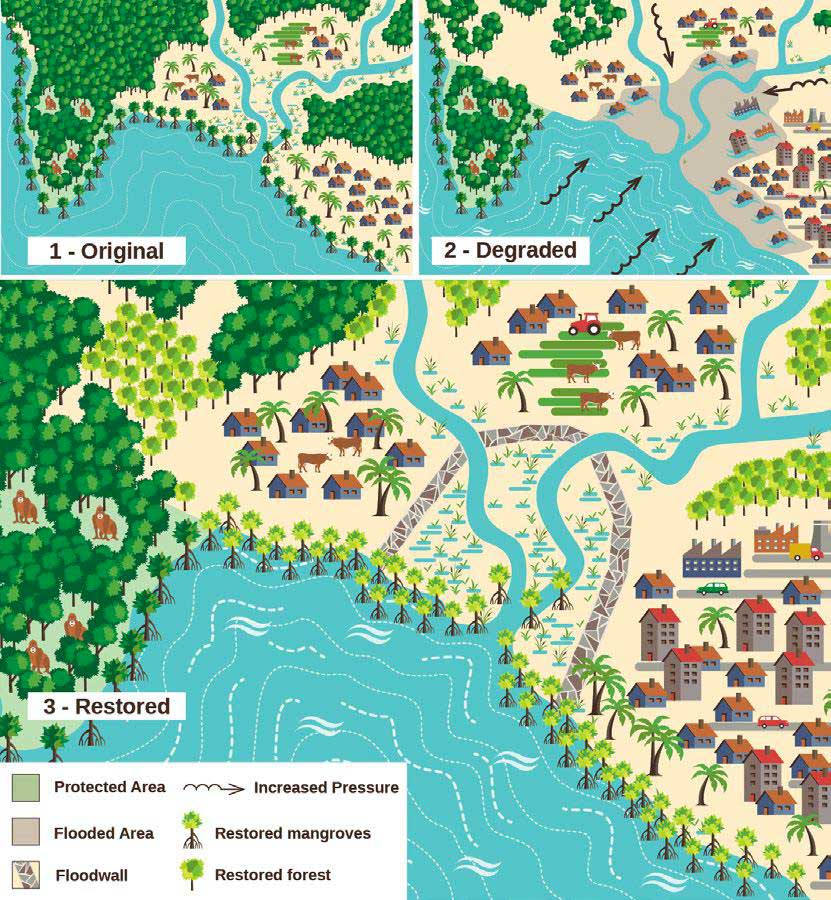
With growing concerns regarding loss of biodiversity and degradation of natural reserves, it is now crucial to give recognition to green space networks within cities and city-regions. To that regard, NbS can no longer be considered as an “optional” luxury in the cities. With climate change stressors and rapid demographic changes, more holistic approaches that take nature into equation are required, whether it is updating current urban infrastructure, or, it is channelizing future investments opportunities and developmental efforts in new urban spaces.
NbS are often considered as valid alternatives for development of urban infrastructure in the cities, especially, where design alternatives incorporate (new) approaches and re-think their time horizon and costs in maintaining them to prospective risks and disasters in future (Frantzeskaki, 2019). Over the next several decades, with rapid urban growth, it raises a unique urgency to act now. Current decisions taken by designers, planners, and practitioners over the next few years could significantly change and help shape how cities will grow and develop while combating urban challenges.
NbS projects have recently been adopted by many companies, non-governmental organizations, policy makers, equipment dealers, and other customers in increasingly large numbers. Co-creating and co-maintaining NbS will require willingness and collaboration across various institutional departments and its citizens beyond consultative and regulative approaches. This will allow formulation of local policies as per the city requirements, and eventually, scaling up its implementation and strengthening adaptive and mitigative measures for the most pressing challenges of urban landscapes.
Four core principles are usually involved as fundamental basis for urban planning and designing through an over-arching perspective of NbS (Figure 1-4). These include:
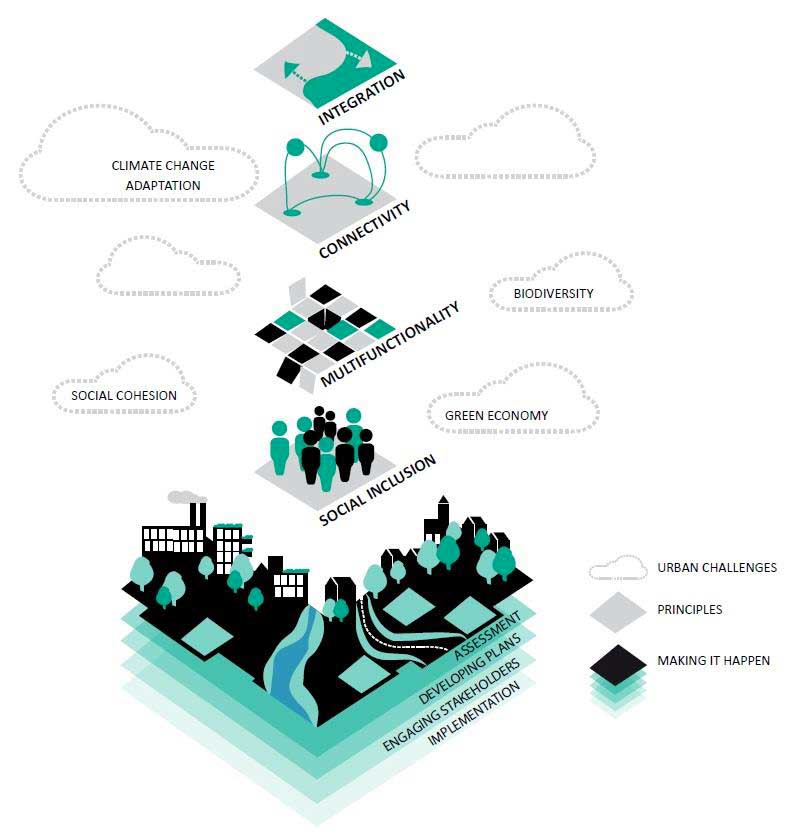
7 Hansen, R., Rall, E., Chapman, E., Rolf, W., Pauleit, S. (Eds.), 2017. Urban Green Infrastructure Planning: A Guide for Practitioners. GREEN SURGE. Retrieved from http://greensurge.eu/working-packages/wp5/
8 The Nature Conservancy, 2018. Nature in the Urban Century – A global assessment of where and how to conserve nature for biodiversity and human well-being.
The Nature Conservancy in one of its scientific reports on ‘Nature in the Urban Century’8, addresses the need to focus on challenges due to urban growth at different scale of interactions: global, regional, city and neighborhood (Figure 2-1). This was, however, developed in the context of quantifying impacts of urban growth on biodiversity and human well-being.

In this white paper, we recognize that NbS encompasses a much broader set of strategies, many of which might not be explicitly possible to cover in this white paper. Below, we discuss the range of NbS broken into categories at the level of their implementation in cities, with respect to the specific challenges that they address.
A region can be described based on similar landform, vegetation, geology, and historical land-use features, to name a few. Often, regional scale can be interpreted as areas with a larger spatial extent (area of the landscape varying between 1 km2 to 10,000 km2). For instance, it could represent the northern coastline of all the Emirates within the UAE, or the Arabian highlands and shrublands commonly shared by UAE-Oman borders, or the vast expanse of desert stretch between the UAE and Saudi Arabia. Some of the examples of NbS at a regional level are listed in the following sections.
Protected area interventions form the cornerstone of conservation efforts for any region. NbS also suggests the introduction of land management through protected areas and restoration of degraded areas, as part of the NbS umbrella concept for ecosystem-based management approaches for conservation initiatives.
Naturally protected areas in, and adjacent to, cities are able to provide range of ecosystem services and benefits that support human health and climate change adaptation, thus, contributing to healthy societies (MacKinnon et al., 2019). Protected areas are also known to help societies dealing with desertification and drought9. As drylands have limited freshwater supplies, in addition to highly variable and erratic rainfall patterns, preserving natural vegetation and wetlands can help regulate water flows, and maintain water supplies for domestic and agricultural purposes.
In many regions, adequate supply of potable water primarily depends on protected areas10 A functional natural waterbody near a city can not only allow suitable maintenance of water quality, but also, regulate seasonal water supplies through slowing-down subsurface flows, natural filtration and groundwater renewal/recharge. For instance, two protected areas in the Andes, the Cayambe – Coca (4,031 km²) and Antisana Ecological Reserves (1,200 km²), provide drinking water to roughly 80% of Quito’s 2.6 million residents (Lopoukhine et al., 2012). 97% of cities’ water supply comes from surface water sources, and around half that comes from inter-basin transfers11. The watersheds surrounding the city originate in the Neotropical alpine grasslands (“paramos”), which regulate water flow and protect the city’s water supplies.
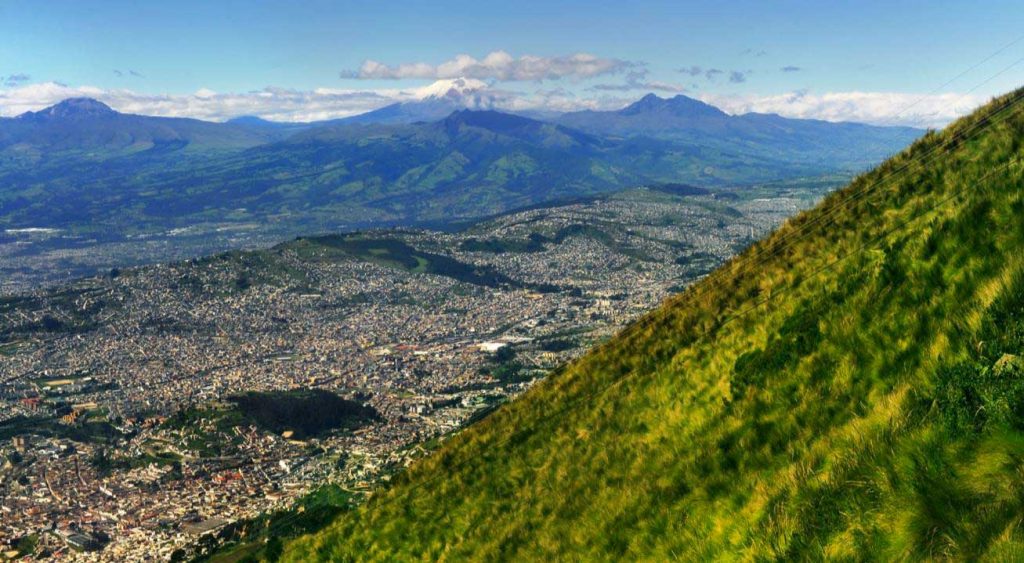
9 IUCN, 2011. (https://www.iucn.org/content/natural-solutions-protected-areas-helping-people-deal-desertification-and-drought)
10 IUCN, 2012 (https://www.iucn.org/content/natural-solutions-protected-areas-maintaining-essential-water-supplies)
11 The Nature Conservancy, 2019. (https://water.nature.org/waterblueprint/city/quito/#/c=8:-0.43396:-78.36823)
Understanding the spatial patterns and dynamics of cities from a regional level is very crucial. One of the key “green” infrastructural solutions is the establishment of habitat connectivity between green spaces in cities and its adjacent surroundings (Figure 2-3). This aspect of green infrastructure planning includes developing physical and functional connections between green spaces at different scales, and from different perspectives (Pauleit et al., 2017).
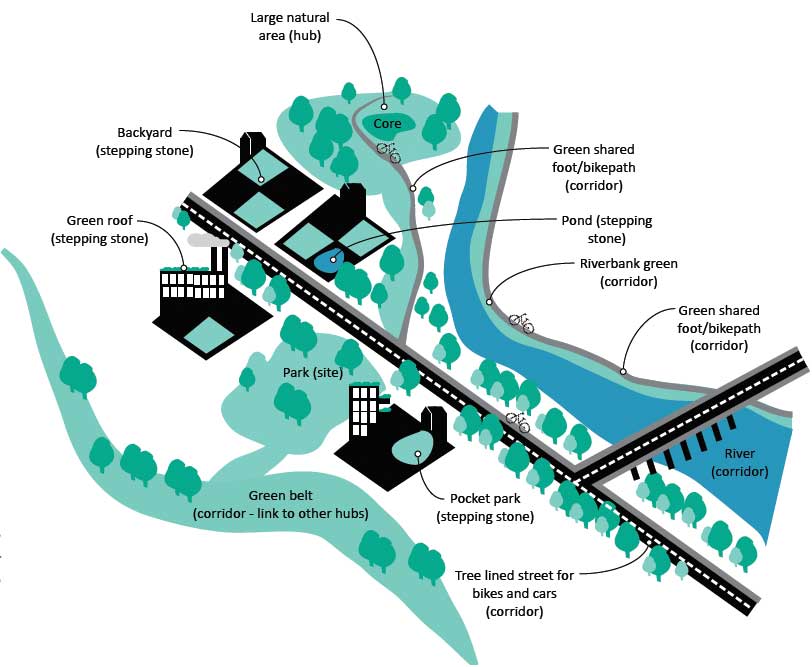
12 Hansen, R., Rall, E., Chapman, E., Rolf, W., Pauleit, S. (Eds.), 2017. Urban Green Infrastructure Planning: A Guide for Practitioners. GREEN SURGE. Retrieved from http://greensurge.eu/working-packages/wp5/
Creating networks among green spaces in cities not only allows easier movement for fauna, but also supports abiotic flows such as, such as of energy, water and air. This leads to fresh supply of air by creating ventilation corridors, while also reducing air pollution. Moreover, it creates a cooling down effect through establishment of parks, gardens, and roadside trees, when it acts as a rather collective green infrastructure network. As result, inter-connected green urban spaces can potentially reduce environmental risks and minimize the impacts of climate change in cities.
Berlin (Germany) had started the city-wide Landscape Programme (LaPro) which has been instrumental in promoting social and ecological connectivity in the city. The LaPro is updated at broadly ten-year intervals, with the aim of integrating areas for conservation among other uses of ecologic relevance13. This plan, once established, had laid the foundation for strategic decisions on land uses, allocation of resources as well as their preservation for strategic green planning for the city of Berlin and its extending region.
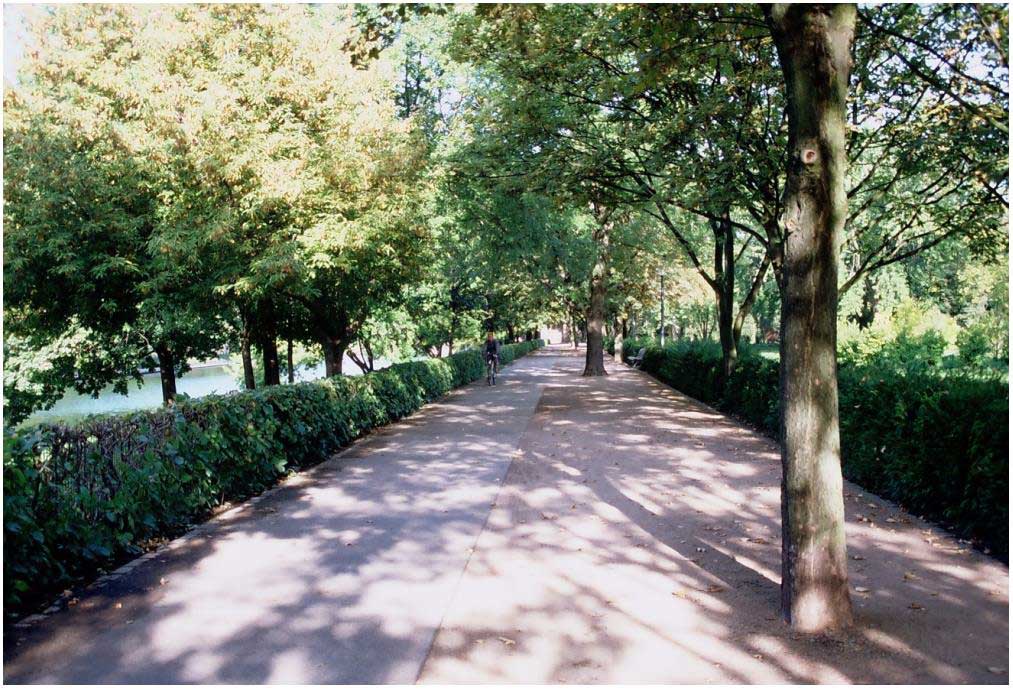
13 Landscape Programme (Landschaftsprogramm) (LaPro) for the City of Berlin (Sourced from http://www.berlin.de/senuvk/umwelt/landschaftsplanung/lapro/index.shtml)
14 Carne, R. J., 2016. ‘Green infrastructure and green infrastructure planning: a review of concepts and practices with particular reference to Berlin, Germany’, Coursework Master thesis, University of Tasmania.
More than a billion people live in low-lying coastal regions15. Given current climate risks/hazards scenario, developing strategies and technologies for coastal protection is critical to safeguard societies, as well as infrastructure and other assets from negative consequences of high water levels (sea-level rise) and wave overtopping (Möller, 2019).
Engineering solutions usually include the common ‘hard’ structures, such as, seawalls and breakwaters, in response to current solutions for coastal defenses. However, these solutions are economically and ecologically unstainable, and their costs of maintenance under future climate risks are significant. On the contrary, ‘soft’ ecological engineering techniques through natural habitats such as, biogenic reefs, salt marshes, sand dunes, reclaimed coastal areas (beach and vegetation), mangroves, seagrass and kelp beds, and coral and shellfish reefs, have often shown to provide cost-effective solutions compared to the artificial structures16.
Creating and/or restoring these habitats can protect shorelines through natural ecosystem processes such as, increased bed friction, local shallowing of water, sediment deposition and building vertical biomass (Morris et al., 2018). They also provide wider benefits and services, for example, tourism and biodiversity conservation (Sutton-Grier et al., 2018). The advantage with these systems is that they provide protection against erosion and waves, and also, adapt to changes in climate and self-repair after major storm events (Gittman et al., 2014).
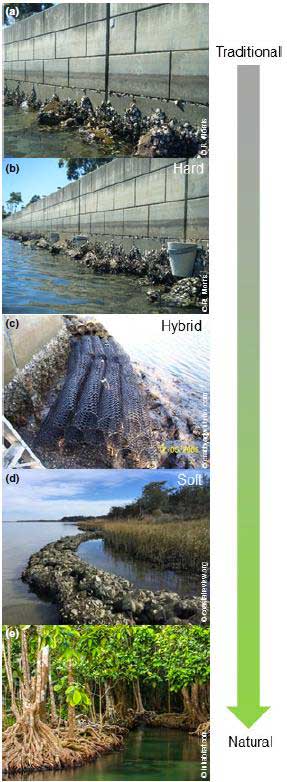
15 WOR, 2010. The battle for the coast. (Sourced from https://worldoceanreview.com/en/wor-1/coasts/living-in-coastal-areas/)
16 European Commission (EC), 2015. Towards an EU Research and Innovation policy agenda for Nature-Based Solutions & Re-Naturing Cities. Final Report of the Horizon 2020 Expert Group on ‘Nature-Based Solution and Re-Naturing Cities’.
More recently, the innovative opportunities to combine natural and hybrid approaches are being incorporated for storm surges and coastal flooding protection plans (Figure 2-6).
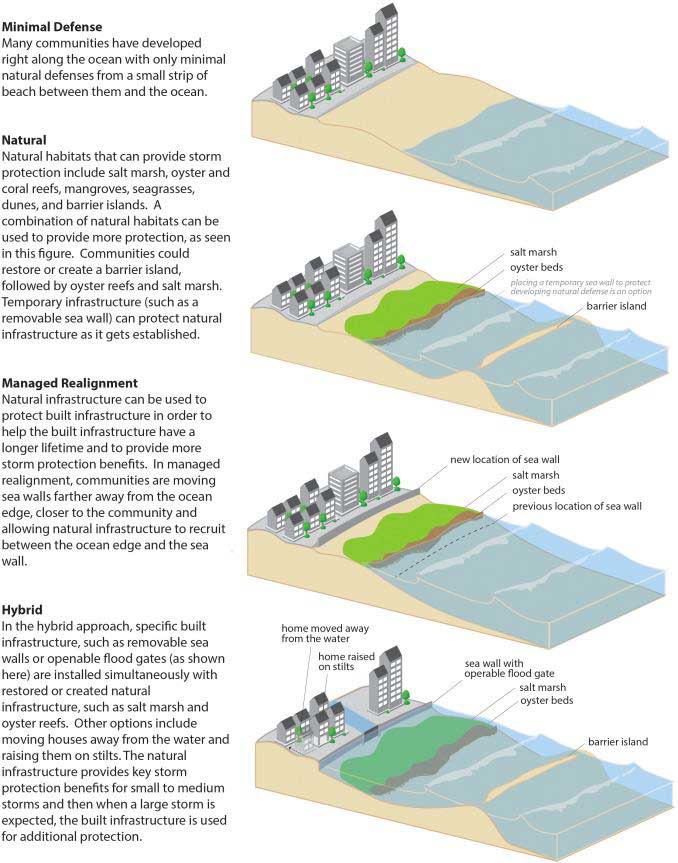
A recent research discusses the effectiveness of restoration of marshes and oyster reefs in the United States (US) Gulf of Mexico coast, as they are the most cost-effective solutions for reducing coastal flooding risks. As per their estimates, wetland and reef restoration can yield higher benefit-to-cost ratios. By 2030, it is expected that flooding would cost up to $134–176.6 billion dollars (for different economic growth scenarios), but nature-based adaptation measures could avert more than $50 billion dollars of these costs (Reguero et al., 2018).
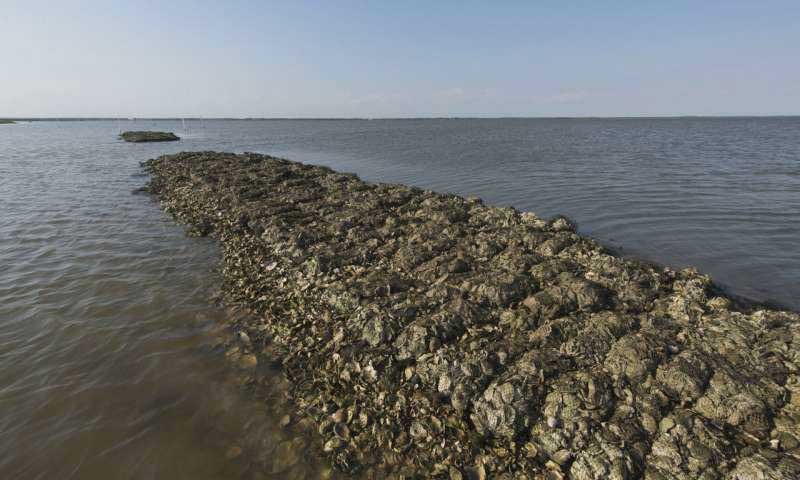
17 UC Santa Cruz, 2018. Nature-based solutions can prevent $50 billion in Gulf Coast flood damages (Sourced from https://phys.org/news/2018-04-nature-based-solutions-billion-gulf-coast.html)
Identifying and mapping existing NbS and understanding the potential of their deployment can aid local authorities in developing long-term strategies for climate change adaptation.
Priority areas in this case could include, either conservation (and/or protection) of any habitat type (such as, green patch of urban forests within a city), or management of infrastructure, facilities and other utilities (e.g. priority areas to implement sustainable urban drainage system after identification of network saturation hotspots).
To illustrate this further, a methodological guide was developed for Basque country (for Donostia / San Sebastián city), by detecting the most vulnerable and sensitive areas that may require preferential action in the implementation of nature-based solutions. After identification of issues affecting systems, sectors, resources and vulnerable areas in the Basque Country, interventions were suggested for building (site level), neighborhood (district level), and municipality level including per-urban areas18.
Figure 2-8 Approach and sequence to identify and map nature-based solutions
18 KLIMA 2050, Basque Country: Ihobe, Environmental Management Agency Ministry of the Environment, Territorial Planning and Housing – Basque Government, 2017. (Sourced from http://growgreenproject.eu/nature-based-solutions-climate-adaptation-basque-country/)
In many instances, planned city extension measures were developed providing long-term spatial directions for growing cities. For example, lessons can be drawn from the city of Manhattan, New York, USA19. The city layout is a grid-based design plan, with clearly defined mixed-use development within the city, in addition to distinction between public and private spaces, street life and street frontage (including adequate street proportions), open space and built-up areas, and well-dimensioned streets and blocks. The land use zoning allowed separation of business and residential districts, and meanwhile, over time, also allowed a mix of commercial mixed-used districts; demonstrating adaptative changes to increasing population requirements within the city.
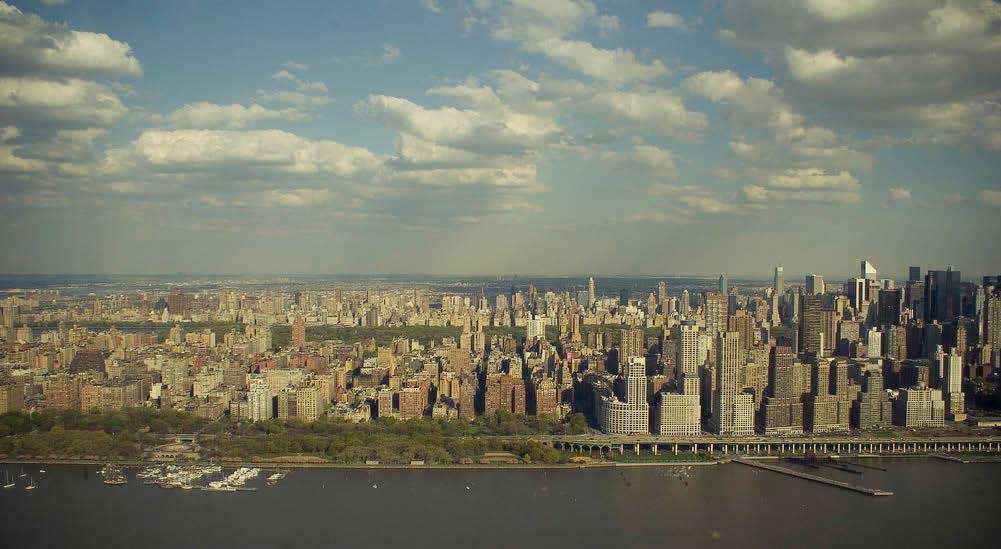
19 UN-Habitat, 2015. Planned City Extensions: Analysis of Historical Examples. (Sourced from https://unhabitat.org/books/planned-city-extensions-analysis-of-historical-examples/)
Lately, as per IUCN report (French Committee), focus has been given to New Caledonia, especially in Ouvéa islands, as increased frequency of extreme weather events, such as tropical storms and cyclones, have resulted in significant coastal erosion. The local government has implemented a climate change adaptation strategy that incorporates several components: (i) erosion monitoring (establishment of a participatory monitoring system, analysis of aerial photographs), (ii) maintaining natural coastline area, moving tribe living areas further inland, and, (iii) integrated participatory management of the coastal zone, in order to maintain coastal ecosystems in good conservation status. Moreover, zone management has been adopted that is aimed at maintaining balance between land planning, usage and preservation of sensitive (i.e. priority zones) areas along the coastal shores. In fact, this initiative has led to yearly savings amounting to 115 to 220 million Euros in New Caledonia according to the French Initiative for Coral Reefs (IFRECOR)20.
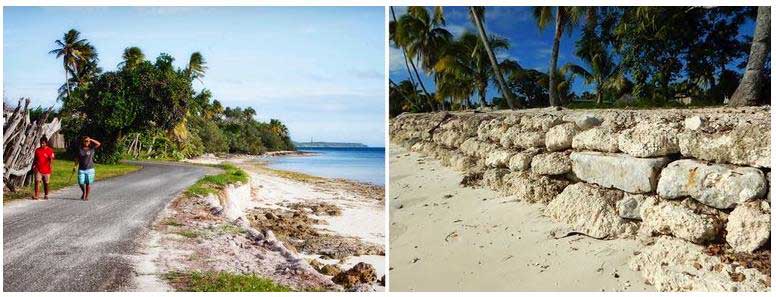
A city’s defining limit, i.e. geographically limits and its spatial boundaries could vary for different countries based on their preferences to segregate towns, cities, and sub-urban (peri or semi-) areas. Usually, local NbS can be easily applied at the level of a city-wide strategy, in line with the needs of the municipality, and also, in accordance with the local planning councils. Moreover, they can be integrated into local public policies, both in terms of the general urban planning, as well as, in the future developmental plans for the city. Some of the examples of NbS that can be implemented at the city scale are listed in the following sections.
20 IUCN (French Committee), 2016. Nature-based solutions to climate change (Sourced from https://portals.iucn.org › library › sites › library › files › documents)
21 Pecquet, S. and Dorion, A-E., 2018. Ouvéa, a fragile paradise (Sourced from https://earthjournalism.net/stories/ouvea-a-fragile-paradise)
NbS often entails sustainable restoration to improve the resilience of degraded ecosystems. Ecological restoration, including (re)afforestation and rehabilitation of degraded land, is increasingly included in the array of potential human responses to climate change (Harris et al., 2006).
For example, it could include restoration of a degraded water stream and its tributaries through broad range of measures such as, removal of watershed disturbances causing stream instability, installation of structures and planting vegetation to protect streambanks, and providing habitat for species, and reshaping or replacing unstable stream reaches into appropriately designed functional streams and associated floodplains22. It could include restoration of degraded grassland ecosystems as well, through removal of existing invasive vegetation (if any), and planting native grasses and wildflowers on the degraded project site23. Other examples include bioengineering island waters streams using walls of willow trees that capture sediment upstream and prevent it from dirtying downstream rivers24.
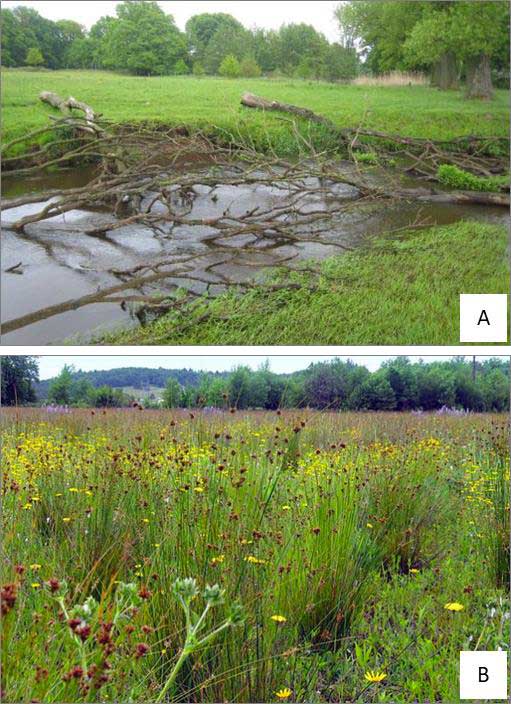
22 Stream Restoration: A Natural Channel Design Handbook. NC State University, SDMS Doc ID 554360. (Sourced from https://semspub.epa.gov/work/01/554360.pdf)
23 Grassland Restoration (Sourced from http://www.mattole.org/programs/restoration/grassland/)
24 Mynott, S., 2013 (Sources from https://blogs.egu.eu/geolog/2013/04/11/bioengineering-could-be-the-answer-to-dirt-free-dams/)
25 Prof. Verdonschot, 2019 (Sourced from https://www.wur.nl/en/Research-Results/Research-Institutes/Environmental-Research/Programmes/Sustainable-Water-Management/Water-quality/Freshwater-Ecosystems/Stream-restoration-nature-based-solutions.htm)
26 Kumar, 2019 (Sourced from https://blogs.ei.columbia.edu/2019/06/28/nature-based-solutions-climate-adaptation/)
Wetland restoration is common in the US, as large areas of unused land can be restored, enhanced or preserved as wetlands. For instance, Chevron Corporation’s Richmond Water Enhancement Experimental Wetland is situated in the US on 90 acres of former decommissioned site (i.e. effluent treatment ponds), which now serve as an attractive resting spot for migratory wading birds, and is full of deep channels and dense areas of various reeds and duck mounds27. There are multiple ecosystem benefits and services that can be derived from such healthy wetlands as they provide significant support (or sometimes, even provide replacement) to traditional infrastructure for water treatment, water supplies, drought mitigation and flood control/protection (Figure 2-12).

Impermeable surfaces (e.g. artificial structures/pavements covered by impenetrable materials such as of asphalt, concrete, brick, stone) along with removal of vegetation can often reduce the ability of cities to intercept, store and infiltrate excess rainwater; thereby, resulting in stormwater run-off and increased risks of city-wide flood-prone areas (Zölch et al., 2017). This gets further amplified with climate change impacts such as, increased flood frequencies and higher intensity rainfall events.
To deal with stormwater in many cities, there have been ample evidences that support the hypothesis that NbS can increase level of evapotranspiration and reduce urban stormwater
27 The Nature Conservancy, 2019. Strategies for Operationalizing Nature-Based Solutions in the Private Sector. The Nature Conservancy Business Council (Nature Infrastructure Working Group).
28 Sourced from http://nwrm.eu/case-study/wetland-restoration-ciobarciu-romania
29 Sourced from http://www.rec.org/project-detail.php?id=53
(Kabisch et al., 2017; Versini et al., 2018). As stormwater management facilities are often part of cities’ infrastructure plans, they are usually governed by city management systems and are largely influenced by the urban planner’s discipline perspective of the role of nature towards city planning30. Therefore, it is important to communicate across various institutional departments and governing bodies comprising of the city planning councils, that sustainable stormwater water management can be easily achieved through efficient and cost-effective NbS, as they provide multiple economical as well ecological benefits within the cities. For large-scale stormwater management, it includes building basins that are meant to collect excess rainwater, and releasing it at a rate that prevents flooding or erosion in the cities. These include detention (“dry”) basins and retention (“wet”) ponds31.
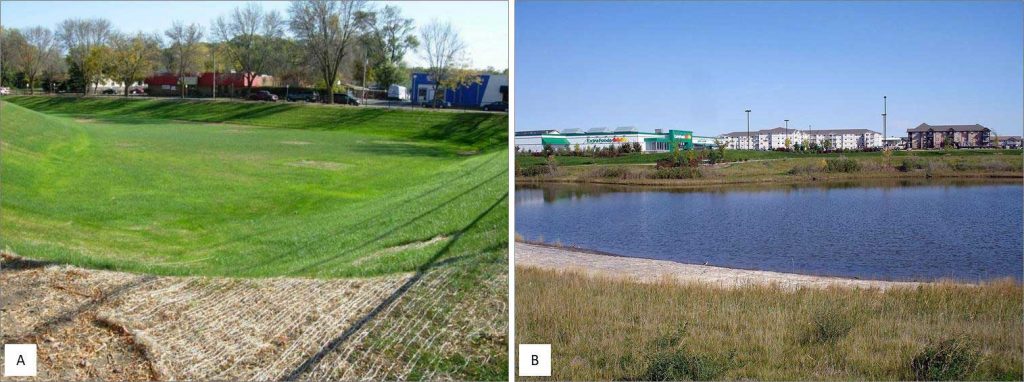
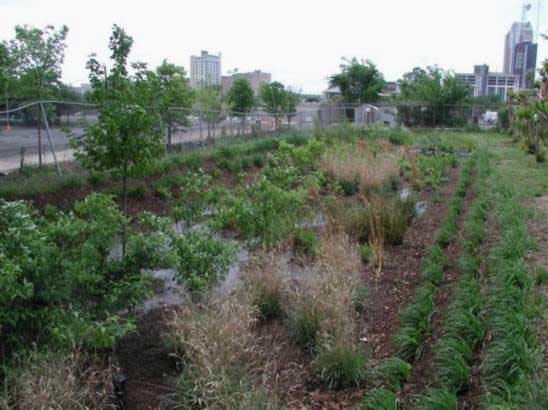
30 Udomcharoenchaikit, P., 2016. Nature-based solutions for urban stormwater management: Experiences in Malmö and Copenhagen: A case study analysis on the decision-making process. IIIEE Masters’ Thesis.
31 Leber, B., 2015. Stormwater Basins: How Detention and Retention Ponds Work (Sourced from https://info.wesslerengineering.com/blog/stormwater-basins-detention-retention-ponds)
32 Platinum Ponds, 2016. What is capturing your run-off? (Sourced from https://www.platinumlakemanagement.com/blog/hey-charlotte-what-is-capturing-your-runoff)
33 Sourced from https://webpages.uidaho.edu/larc380/new380/pages/retBasin.html
Other common examples of NbS for urban stormwater management include, rain gardens, natural bioswales, artificial water channels, infiltration strips (porous/permeable paving materials), city parks, wetlands, or, even, urban trees (Figure 2-15).

34 Urban Green-Blue Grids (Sourced from https://www.urbangreenbluegrids.com/measures/)
NbS often considers wetlands at the center for pollution abatement and other ecological services, whether it is through natural wetlands or constructed wetlands35. Constructed wetlands use natural geochemical and biological processes, involving wetland vegetation, soils, and their associated microbial assemblages to improve water quality. These are especially useful in treating municipal or industrial wastewater, grey-water or storm-water run-off; thereby, having the potential to replace sewage treatment plants (STPs) in different regions (Figure 2-16). Constructed wetlands deploy a natural method for filtering wastewater. It usually consists of a shallow basin filled with a substrate, such as, sand and/or gravel, and planted vegetation tolerant of saturated conditions. As wastewater flows through the system, vegetation traps suspended solids, while plants and other micro-organisms take up other pollutants in the wastewater; thus, creating a network of aerobic, anoxic, and anerobic zones, which through series of processes effectively remove organic pollutants from the wastewater. For instance, a constructed wetland can convert organic nitrogen from fertilizers into usable inorganic forms36.
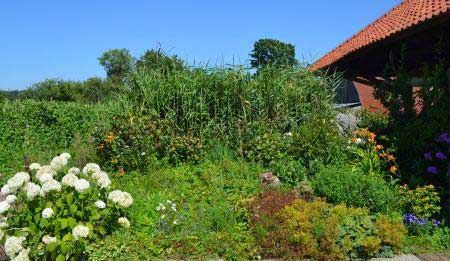
35 Sourced from http://domuscw-project.eu/constructed-wetlands/
36 The Nature Conservancy, 2019. Strategies for Operationalizing Nature-Based Solutions in the Private Sector. The Nature Conservancy Business Council (Nature Infrastructure Working Group).
37 Sourced from http://www.kilianwater.nl/en/constructed-wetlands/examples.html
Over the years, hundreds of such applications can be seen around the world through constructed wetands. The largest industrial constructed wetland system in the world was developed and installed by BAUER Umwelt GmbH in Oman, namely, the Nimr Water Treatment Plant (NWTP), which consists of 7.8 km2 of wetlands and ponds, treating 110,000 m3/day of produced water from nearby oil fields in the Southern Oman desert38.
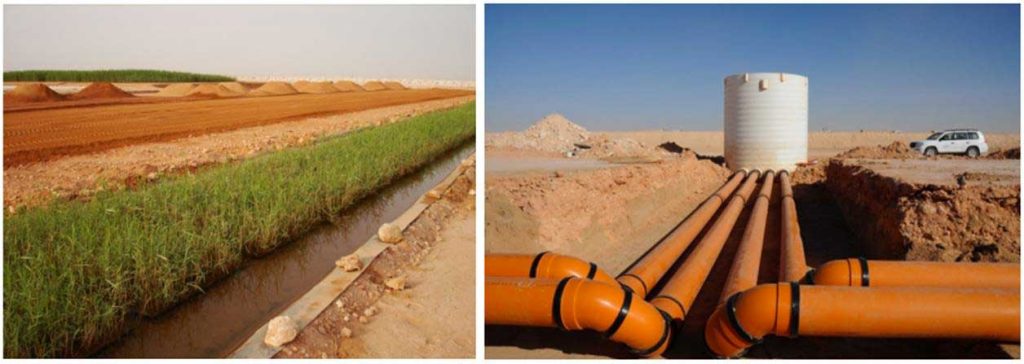
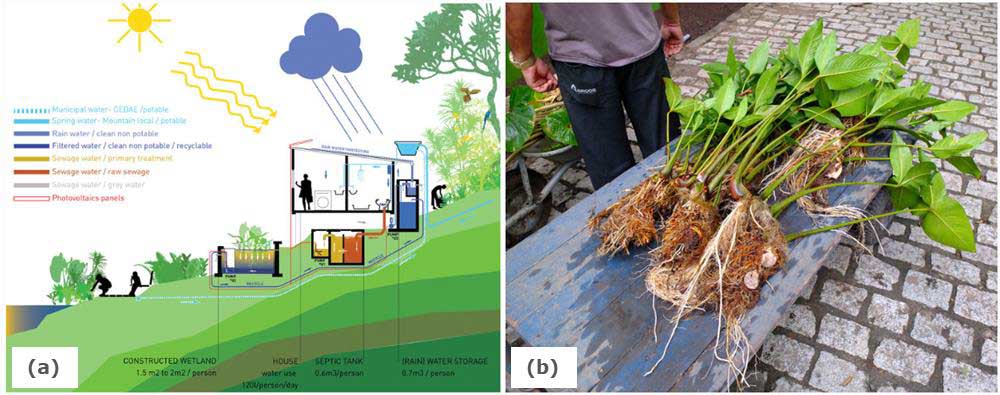
38 Nimr Reed Beds (Sourced from https://www.pdo.co.om/en/technical-expertise/nimr-reed-beds/Pages/default.aspx)
39 Breuer, R, 2011. Nimr Water Treatment Project Oman: BAUER, Germany (Sourced from https://www.bauer.de/export/shared/documents/pdf/bre/brochures/Constructed_Wetlands.pdf)
40 Sourced from http://www.aguacarioca.org/what-are-constructed-wetlands
The increasing dense urban environments have led to the demand for more space and an invariable space crunch in the cities. Most urban spaces are either too hot, or too cold, or too dry, polluted and impermeable. At the same time, frequent and extreme weather events, such as heatwaves, summer storms and flash floods are becoming very common in the cities. Therefore, new infrastructure developments must be resilient, however, attention to re-designing and retro-fitting existing building infrastructure is also crucial to adapt to climate change impacts (Enzi et al., 2017).
Green architectural options have been latterly adopted to create eco-friendly building designs, materials and construction practices. According to Ragheb et al. (2016), it could include the following characteristics:
Comprehensive sustainability assessment schemes, such as, BREEAM (Building Research Establishment Environmental Assessment Method) and LEED (Leadership in Energy and Environmental Design) have also been developed. More recently, community-based schemes such as BREEAM Communities (BREEAM-C) and LEED for Neighbourhood Development (LEED-ND) are being promoted for sustainable urban development. However, these schemes focus on internal sustainability, while environmental and socio-economic impacts occurring outside the project’s geographical boundaries, such as embodied emissions, are only included to a limited extent (Xing et al., 2017). Hence, incorporating NbS in the built-environment, instead of singular linear approaches through such schemes, can provide rather long-term transformative potential of sustainable development in the urban spaces.
NbS through green architecture options in the infrastructure sector can provide a wide range of sustainability benefits and ecosystem services, such as, urban heat island mitigation, enhanced biodiversity, stormwater management, carbon capture and sequestration, reduced building energy demands, air quality through bio-infiltration, acoustic comfort, and improvement in human health and well-being, among others41.
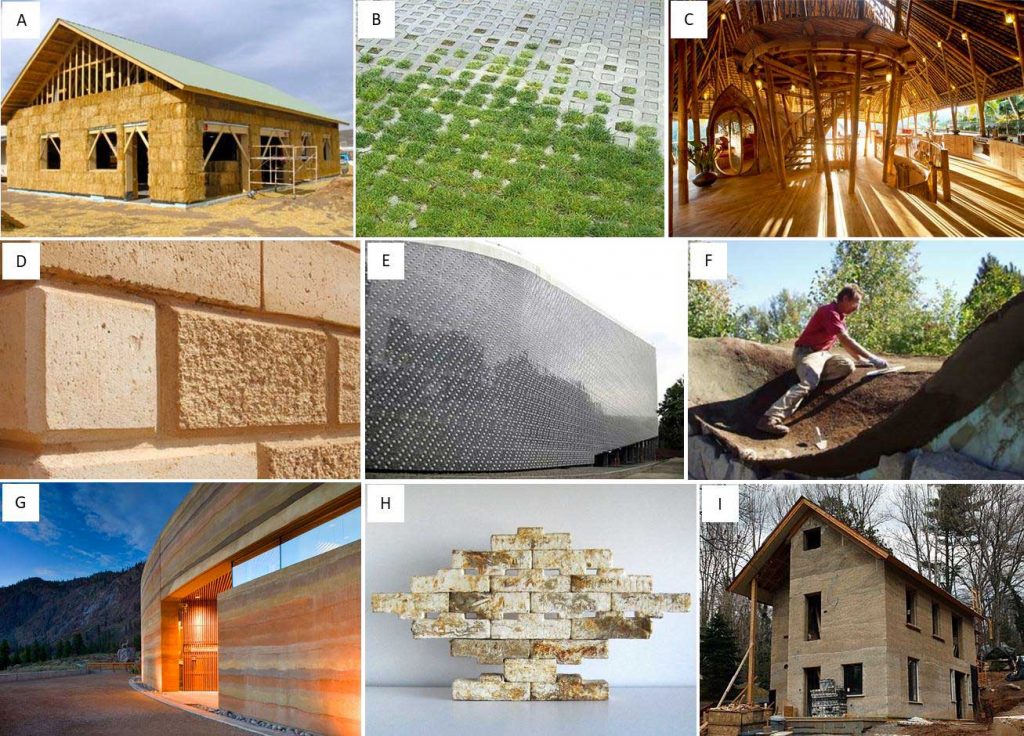
41 Dige, G., 2015. Green infrastructure: better living through nature-based solutions (Sourced from https://www.eea.europa.eu/articles/green-infrastructure-better-living-through)
42 Mahendriyani, D., 2016. Alternative building materials for green construction (Sourced from http://www.asiagreenbuildings.com/14221/green-building-material/)

Introducing NbS at the neighborhood-scale is crucial as it addresses urban challenges, and also, allows partnership among different stakeholders; thereby, raising public awareness on NbS, and its potential to include social issues within the design solutions (i.e. through co-creation with societies)43. For example, it could include communities with agriculture and farmlands, or small towns, or even highly urbanized districts/zones within cities. Some of the examples of NbS at the neighborhood-scale are listed in the following sections.
NbS targeting water-efficient agricultural practices can enhance both supply and quality of available water sources; alongside, reducing impacts due to natural and climate-related disasters44. Furthermore, best-management practices such as, minimal soil disturbance, maintaining soil cover, ensuring crop rotation, and reducing fertilizer and insecticide usage, can significantly improve soil quality and vegetation health, in and around the cultivated site, thereby, proving beneficial for large-scale land owners. Through fully-operational irrigation practices for water and land management, NbS allow simultaneous improvement of water supply sources, as well as the quality, while increasing agricultural productivities. From basic to complex solutions, NbS, if typically adopted in conjunction with conventional water infrastructure, can bring about more sustainable outcomes. For instance, planting buffer strips of native vegetation, or even grasses or meadows, around agricultural fields, can lead to reduced (and sometimes, even avoid) nutrient-rich run-off to nearby waterbodies, and other farmlands (Figure 2-21).
43 EU, 2018. Sustainable Use of Land and Nature-based Solutions Partnership presents final Action Plan. Urban Agenda for the EU (Sourced from https://ec.europa.eu/futurium/en/sustainable-land-use/sustainable-use-land-and-nature-based-solutions-partnership-presents-final)
44 Sourced from https://www.globalagriculture.org/whats-new/news/en/33096.html
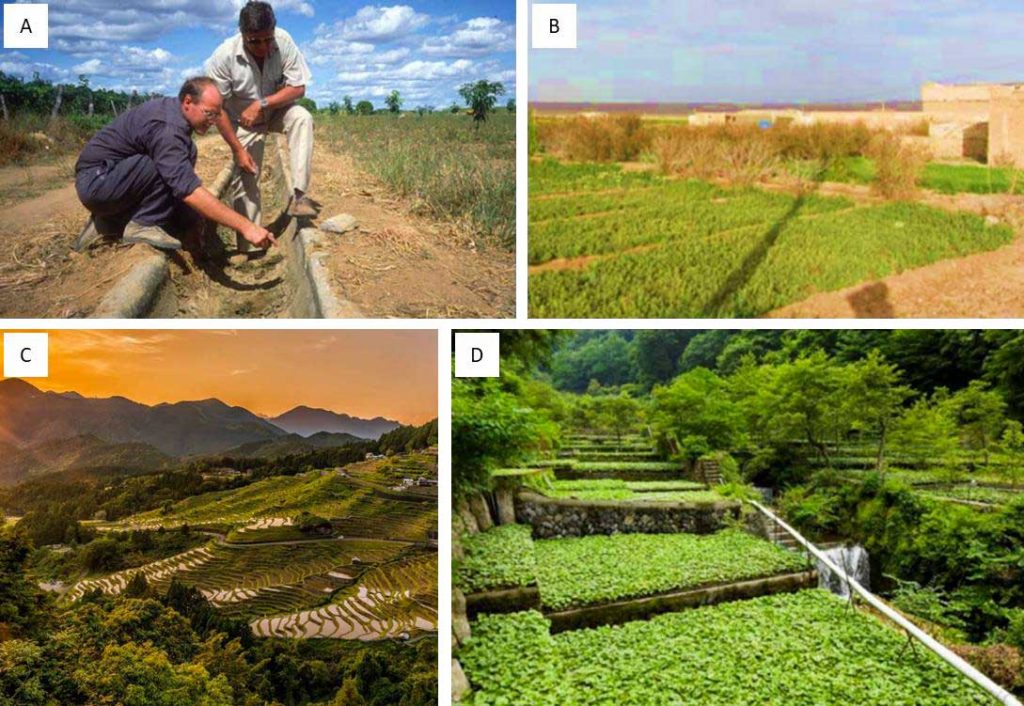
45 Sharpley, et al. 2006. Best Management Practices for Minimize Agricultural Phosphorus Impacts on Water Quality. United States Department of Agriculture (USDA).
46 Sonneveld, B.G.J.S. Merbis, M.D. Alfarra, A. & Ünver, O. and Arnal, M.A. 2018. Nature-Based Solutions for agricultural water management and food security. FAO Land and Water Discussion Paper No. 12. Rome, FAO. 66 pp.
Planting native vegetation, as per their natural formation is critical for maintaining nature’s delicate eco-balance. To that regard, strategic planning in new and existing developments can include, both planting native species and xeriscaping47.
For instance, xeriscaping began as a movement around conserving water in gardens in the western United States (from California to the Rocky Mountains), without sacrificing aesthetic-appeal, especially for arid communities (Figure 2-23). It essentially refers to landscapes that are designed to require less irrigation and pesticide applications, and also, require less maintenance, such as, lawn mowing and manicuring.
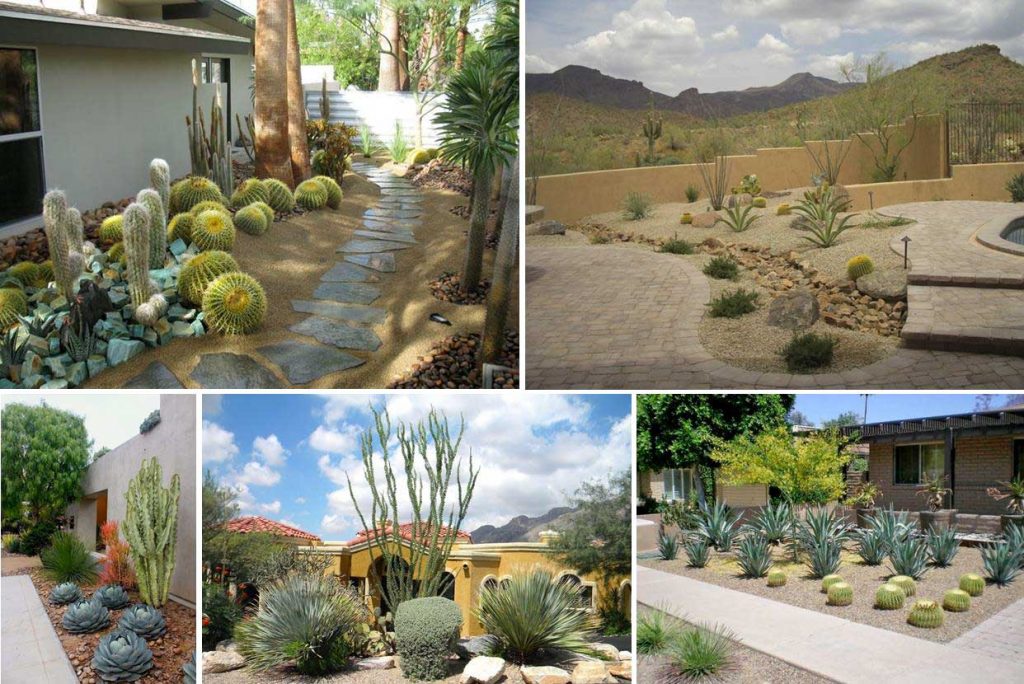
47 The Nature Conservancy, 2019. Strategies for Operationalizing Nature-Based Solutions in the Private Sector. The Nature Conservancy Business Council (Nature Infrastructure Working Group).
To address global water crisis, NbS offer various methods to address water challenges, such as, flooding and soil erosion, shortage of water supplies, and degrading water quality, in both urban and rural settings. Mobilizing actions towards NbS has also been linked to circular economy as per the UN World Water Development Report (WWDR 2018)48. Examples of NbS for water management include a range of approaches from micro-level solutions, such as rainwater harvesting, dry toilets and eco-sanitation, or alternative ways to manage wastewater and effluent from agriculture49.
Rainwater harvesting and management (RWHM) is used to mitigate extreme rainfall events in the cities without increasing the capacity of existing sewer system, and in many cases, to also mitigate urban heat island problems. Although, the concept of RWHM is not new, however, considering rainwater as an important (if not primary) water resource for urban water challenges is yet to be entirely established50. The decentralized nature of RWHM requires the involvement and cooperation of the governing bodies, as well as local communities in the cities as they are most affected from extreme rainfall events.
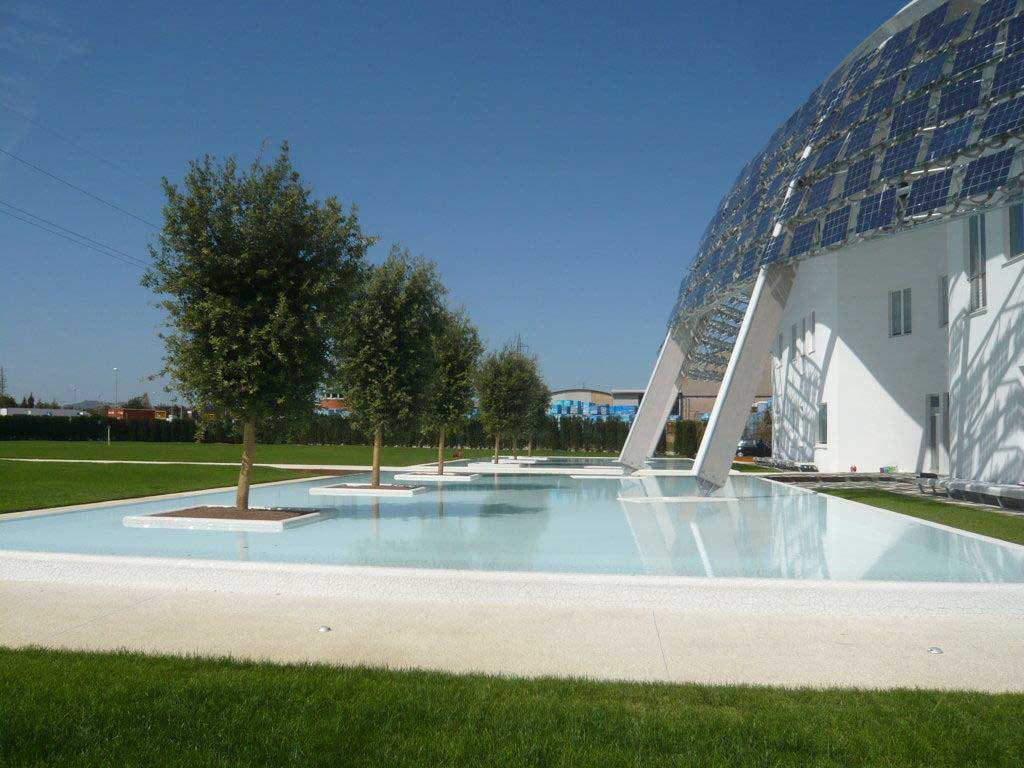
48 WWAP (United Nations World Water Assessment Programme)/UN-Water, 2018. The United Nations World Water Development Report 2018: Nature-Based Solutions for Water. Paris, UNESCO.
49 Schröder, P. 2018. Why we need circular, nature-based solutions to end water poverty (Sourced from https://www.ids.ac.uk/opinions/why-we-need-circular-nature-based-solutions-to-end-water-poverty/)
50 Sourced from https://iwa-network.org/can-rainwater-harvesting-transform-cities-into-water-wise-cities/
51 Sourced from http://www.iridra.eu/en/applicazioni-en/recupero-acque-grigie-e-meteoriche-en.html
There are three main types of rainwater harvesting systems52. These include: (i) direct pumped, (ii) indirect pumped, and (iii) indirect gravity. In certain rare situations, it may be possible to have a purely gravity system as well. The RWHM would depend on individual situations and local site conditions.
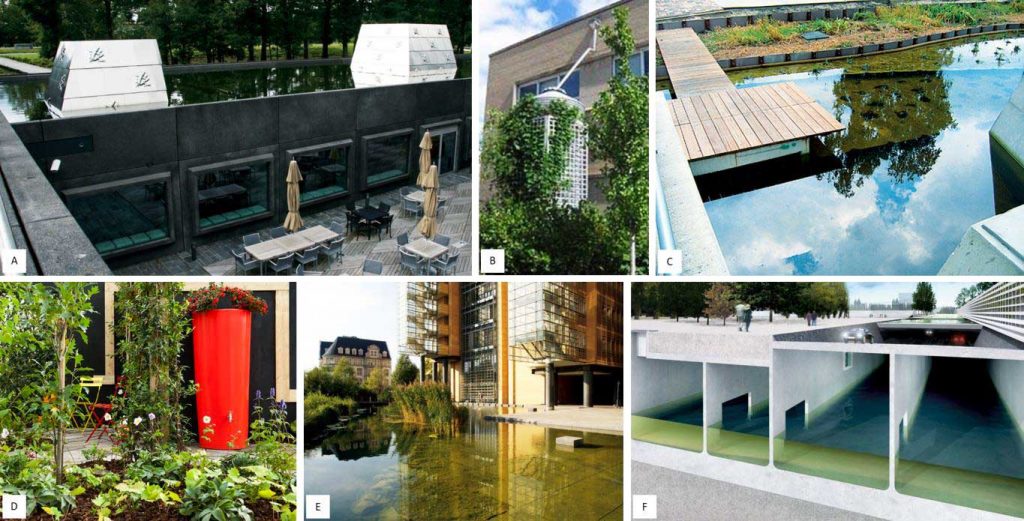
Urban heat is considered as a major environmental concern in cities around the world (Makido et al., 2019). In addition to this, climate change is likely to further exacerbate this phenomenon leading to more frequent, more severe, and longer heat waves in the cities during summer months. This global phenomenon of ‘urban heat islands’ occurs when developing infrastructure in the urban spaces leads to replacement of natural land cover with dense concentrations of pavements, buildings, and other surfaces that absorb and retain heat (Mohajerani et al., 2017). As a result, it invariably results in increased energy demands and subsequent costs (e.g., air conditioning), air pollution levels, and heat-related illness and mortality54. Various measures can be undertaken to reduce urban heat islands. Broadly, five main strategies55 can be incorporated in neighborhood-based mitigative measures:
Planting trees is often considered as the simplest NbS to reduce urban heat island effects as they are able to provide more shade within cities56. However, other solutions could include complex architectural buildings such as, the One Central Park Tower in Sydney, commended for its contemporary green design (Figure 2-26). The key features of this building include hanging gardens, a cantilevered heliostat, an internal water recycling plant, and a low-carbon tri-generation power plant within its compound57.
52 Sourced from https://rainharvesting.co.uk/types-of-rainwater-harvesting-systems/
53 Urban Green-Blue Grids (Sourced from https://www.urbangreenbluegrids.com/measures/)
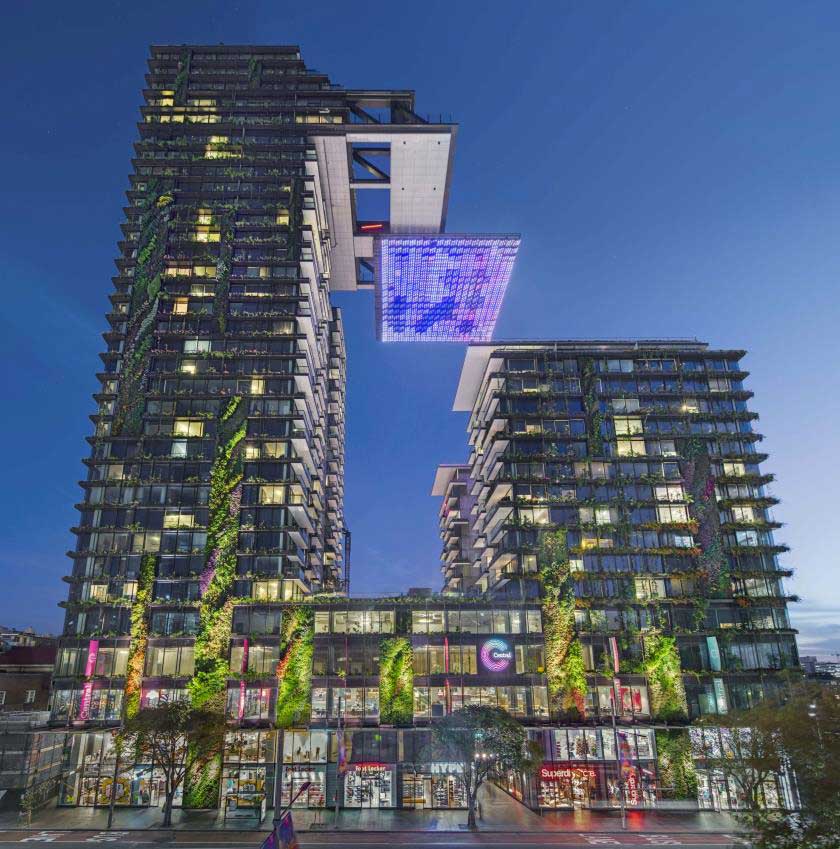
54 Sourced from https://www.epa.gov/green-infrastructure/reduce-urban-heat-island-effect
55 Sourced from https://www.epa.gov/heat-islands/heat-island-cooling-strategies
56 Sourced from https://www.theguardian.com/sustainable-business/2017/feb/21/urban-heat-islands-cooling-things-down-with-trees-green-roads-and-fewer-cars
57 Sourced from https://www.theguardian.com/artanddesign/2014/nov/11/sydneys-one-central-park-wins-international-best-tall-building-award
58 Sourced from (Sourced from https://arcspace.com/feature/one-central-park/
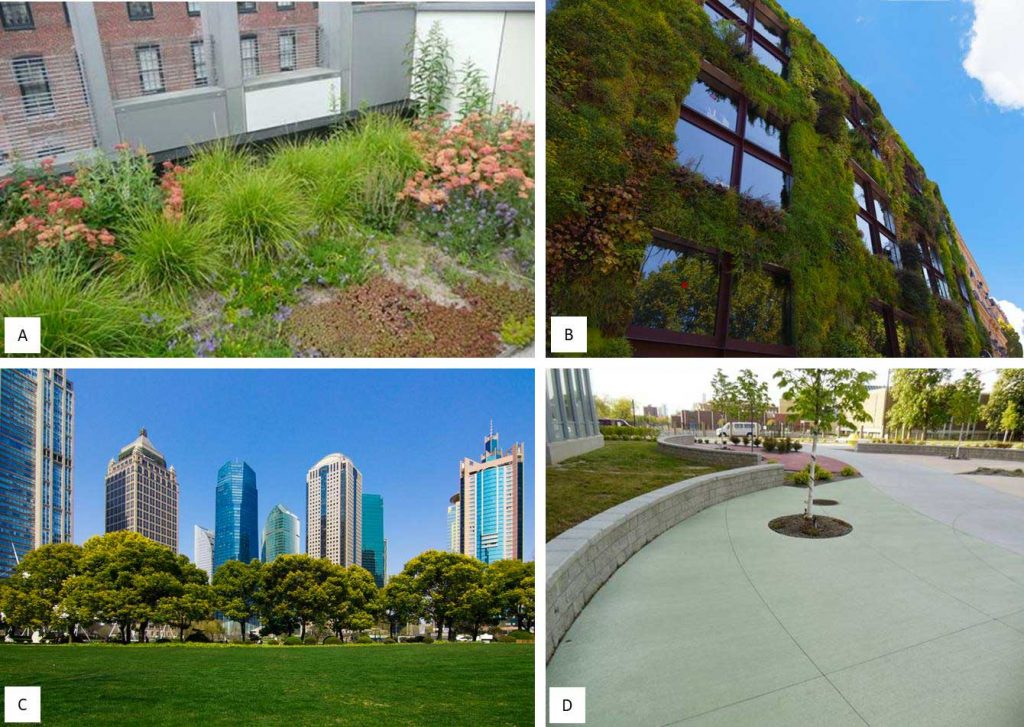
Every city should aim at urban resilience by increasing their capacities to deal with population growth, environmental challenges and climate change impacts. Furthermore, urban planners and designers should develop frameworks that allow complex urban ecosystem to support favorable conditions for both flora and fauna.
More recently, cities are making accommodations for birds through adaptive measures such as: (i) bird-friendly design guidelines, (ii) use of bird-friendly glass, (iii) lights-out programs, and (iv) enhancing and expanding green spaces for their habitats in the cities60.
59 Urban Green-Blue Grids (Sourced from https://www.urbangreenbluegrids.com/measures/)
60 Sourced from https://www.thenatureofcities.com/2015/01/31/is-there-such-a-thing-as-a-bird-friendly-city-what-does-it-look-like-what-does-it-not-look-like-why-bother/
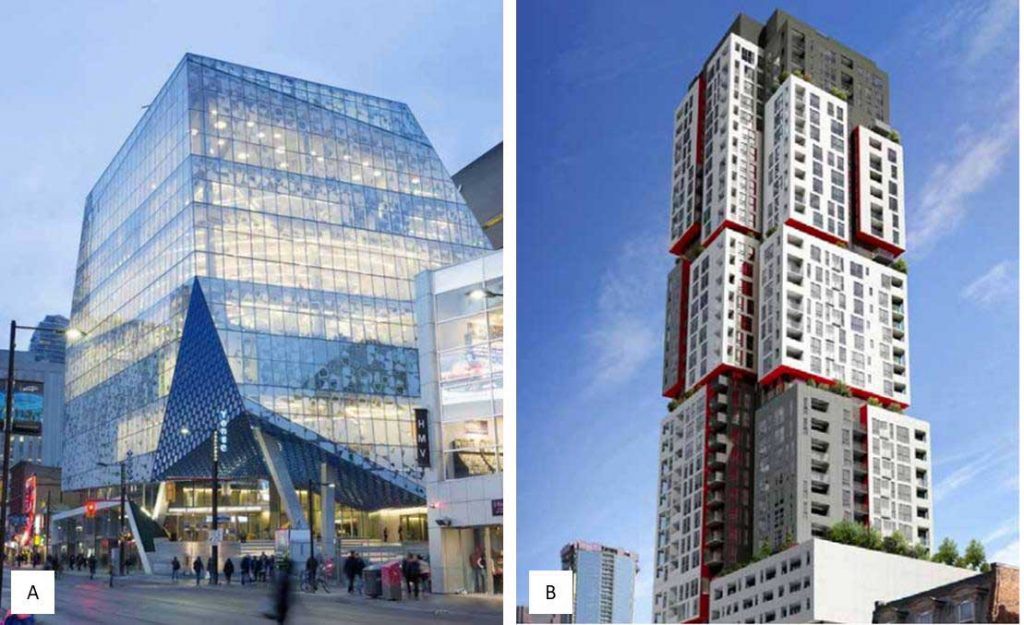
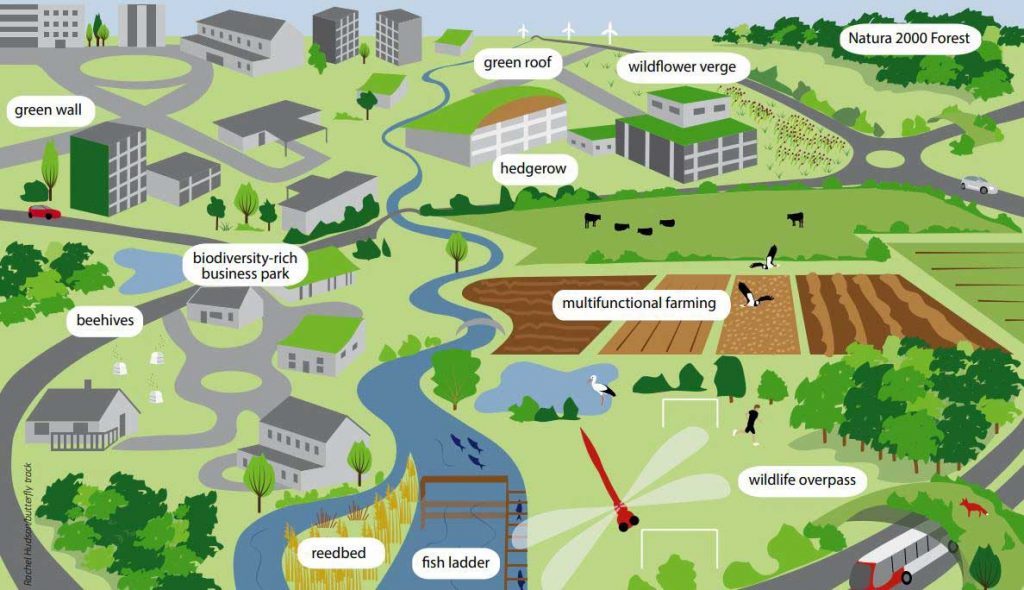
61 Sourced from https://www.toronto.ca/wp-content/uploads/2017/08/8d1c-Bird-Friendly-Best-Practices-Glass.pdf
62 European Union, 2013. Building a Green Infrastructure for Europe (DOI: 10.2779/54125)
During the course of reviewing case studies to formulate this white paper, it became apparent that there is a lack of dedicated research on the applicability of NbS in the Middle East. As a region where expanding populations and increased demand is driving an active construction industry, it might be one of the areas that could benefit most from NbS.
This section shall focus on those NbS which would be most applicable to introduce to major cities in the Middle East, such as Dubai, Abu Dhabi, Riyadh, Jeddah, Muscat, amongst others in the GCC and Arabian Peninsula.
Perhaps the most pressing issues facing regional coastal cities is the imminent threat of sea-level rise. Naturally low-lying with high demand for sea-views, Dubai and Abu Dhabi are prime examples of areas where the need for robust coastal protection measures will continue to grow.
Breakwaters are a common engineering solution to preventing erosion, especially on reclaimed areas and artificial islands which are prevalent in the region. However, NbS provide more cost-effective methods which will also prove to be more adaptable to changing climate conditions.
NbS to prevent coastal erosion and provide flood protection from seal-level rise with direct applicability in the region include:
Stormwater management is a critical avenue to explore as water scarcity is another of the region’s large-scale environmental issues. NbS for stormwater management which will provide multi-faced benefits include:
Treatment of waste water is an absolute necessity in any urban community. Increasing populations lead to increased potable water demand and parallel increases in wastewater generation.
Traditionally, Sewerage Treatment Plants (STPs) take in mixed greywater and blackwater and a series of treatment and filtration create a waste “sludge” and a Treated Sewerage Effluent (TSE), usable for landscaping irrigation. However, the process is energy intensive, TSE use is limited, and STPs require ongoing maintenance and have limited capacity.
The usage of constructed wetlands for waste water treatment is fraught with cultural and societal implications, however, it is already being applied with great success regionally.
The Nimr Water Treatment Plant is the largest constructed wetland globally, covering over 700 hectares of constructed wetlands. Planted native reeds create a desert oasis, providing habitat for resident and migratory birds, invertebrates and fish, as well as mammals and reptiles. The produced water flows via gravity, without pumping, thorough a series of reed beds which results in the removal of hydrocarbon contaminants, purification of the water and recovers crude oil in the process.
Similarly, municipal wastewater can be treated and integrated into landscaping and stormwater treatment systems.
As a region where development and construction activity are amongst the highest in the world, the integration of “green” principles into the design and engineering of built spaces regionally can make good use of a variety of NbS.
Wildlife-friendly design is achieved by integrating design principles to allow urban wildlife populations to thrive. This could be via bird-friendly building facades, provision of nesting and roosting surfaces in rooftop structures, or designing wildlife crossings to increase landscape connectivity and prevent vehicle-wildlife collisions.
Vegetation buffers with native vegetation have a wide range of design applications, such as prevention of coastal erosion, air quality improvement, noise buffering, visual screening, and stormwater management.
The ideology of Nature-based Solutions (NbS) should not be limited to those working in the environmental field. The applications of NbS will be most effectively implemented when the concept is well understood by the region’s urban planners, architects and designers, and infrastructure engineers. It is, therefore, the call of this white paper to industry leaders in these fields to take a closer look at the potential of NbS in helping the region towards meeting both development and sustainability goals.
Bai, X., Dawson, R.J., Ürge-Vorsatz, D., Delgado, G.C., Barau, A.S., Dhakal, S., Dodman, D., Leonardsen, L., Masson-Delmotte, V., Roberts, D.C., Schultz, S., 2018. Six research priorities for cities and climate change. Nature 555, 23–25.
Bellinson, R., Chu, E., 2019. Learning pathways and the governance of innovations in urban climate change resilience and adaptation. Journal of Environmental Policy & Planning 21, 76–89. h
Bertilsson, L., Wiklund, K., de Moura Tebaldi, I., Rezende, O.M., Veról, A.P., Miguez, M.G., 2019. Urban flood resilience – A multi-criteria index to integrate flood resilience into urban planning. Journal of Hydrology 573, 970–982.
Buettner, T., 2015. Urban Estimates and Projections at the United Nations: The Strengths, Weaknesses, and Underpinnings of the World Urbanization Prospects. Spat Demogr 3, 91–108.
Calliari, E., Staccione, A., Mysiak, J., 2019. An assessment framework for climate-proof nature-based solutions. Science of The Total Environment 656, 691–700.
Daniel, M., Lemonsu, A., Viguié, V., 2018. Role of watering practices in large-scale urban planning strategies to face the heat-wave risk in future climate. Urban Climate, ICUC9: The 9th International Conference on Urban Climate 23, 287–308.
Enzi, V., Cameron, B., Dezsényi, P., Gedge, D., Mann, G., Pitha, U., 2017. Nature-Based Solutions and Buildings – The Power of Surfaces to Help Cities Adapt to Climate Change and to Deliver Biodiversity, in: Kabisch, N., Korn, H., Stadler, J., Bonn, A. (Eds.), Nature-Based Solutions to Climate Change Adaptation in Urban Areas: Linkages between Science, Policy and Practice, Theory and Practice of Urban Sustainability Transitions. Springer International Publishing, Cham, pp. 159–183.
Escobedo, F.J., Giannico, V., Jim, C.Y., Sanesi, G., Lafortezza, R., 2019. Urban forests, ecosystem services, green infrastructure and nature-based solutions: Nexus or evolving metaphors? Urban Forestry & Urban Greening 37, 3–12.
Frantzeskaki, N., 2019. Seven lessons for planning nature-based solutions in cities. Environmental Science & Policy 93, 101–111.
Gittman, R.K., Popowich, A.M., Bruno, J.F., Peterson, C.H., 2014. Marshes with and without sills protect estuarine shorelines from erosion better than bulkheads during a Category 1 hurricane. Ocean & Coastal Management 102, 94–102.
Harris, J.A., Hobbs, R.J., Higgs, E., Aronson, J., 2006. Ecological Restoration and Global Climate Change. Restoration Ecology 14, 170–176.
Hu, T., Chang, J., Liu, X., Feng, S., 2018. Integrated methods for determining restoration priorities of coal mining subsidence areas based on green infrastructure: –A case study in the Xuzhou urban area, of China. Ecological Indicators, Landscape Indicators – Monitoring of Biodiversity and Ecosystem Services at Landscape Level 94, 164–174.
Kabisch, N., Korn, H., Stadler, J., Bonn, A., 2017. Nature-Based Solutions to Climate Change Adaptation in Urban Areas—Linkages Between Science, Policy and Practice, in: Kabisch, N., Korn, H., Stadler, J., Bonn, A. (Eds.), Nature-Based Solutions to Climate Change Adaptation in Urban Areas: Linkages between Science, Policy and Practice. Springer International Publishing, Cham, pp. 1–11.
Lafortezza, R., Chen, J., van den Bosch, C.K., Randrup, T.B., 2018. Nature-based solutions for resilient landscapes and cities. Environmental Research 165, 431–441.
Lopoukhine, N., Crawhall, N., Dudley, N., Figgis, P., Karibuhoye, C., Laffoley, D., Londoño, J.M., MacKinnon, K., Sandwith, T., 2012. Protected areas: providing natural solutions to 21st Century challenges. S.A.P.I.EN.S. Surveys and Perspectives Integrating Environment and Society.
MacKinnon, K., van Ham, C., Reilly, K., Hopkins, J., 2019. Nature-Based Solutions and Protected Areas to Improve Urban Biodiversity and Health, in: Marselle, M.R., Stadler, J., Korn, H., Irvine, K.N., Bonn, A. (Eds.), Biodiversity and Health in the Face of Climate Change. Springer International Publishing, Cham, pp. 363–380.
Makido, Y., Hellman, D., Shandas, V., 2019. Nature-Based Designs to Mitigate Urban Heat: The Efficacy of Green Infrastructure Treatments in Portland, Oregon. Atmosphere 10, 282.
Martins, J.M., Guo, F., Swanson, D.A., 2018. Urbanization: A Way of Living, in: Martins, Jo.M., Guo, F., Swanson, D.A. (Eds.), Global Population in Transition. Springer International Publishing, Cham, pp. 151–180.
Mohajerani, A., Bakaric, J., Jeffrey-Bailey, T., 2017. The urban heat island effect, its causes, and mitigation, with reference to the thermal properties of asphalt concrete. Journal of Environmental Management 197, 522–538.
Möller, I., 2019. Applying Uncertain Science to Nature-Based Coastal Protection: Lessons From Shallow Wetland-Dominated Shores. Front. Environ. Sci. 7.
Morris, R.L., Konlechner, T.M., Ghisalberti, M., Swearer, S.E., 2018. From grey to green: Efficacy of eco-engineering solutions for nature-based coastal defence. Glob Change Biol 24, 1827–1842.
Nesshöver, C., Assmuth, T., Irvine, K.N., Rusch, G.M., Waylen, K.A., Delbaere, B., Haase, D., Jones-Walters, L., Keune, H., Kovacs, E., Krauze, K., Külvik, M., Rey, F., van Dijk, J., Vistad, O.I., Wilkinson, M.E., Wittmer, H., 2017. The science, policy and practice of nature-based solutions: An interdisciplinary perspective. Science of The Total Environment 579, 1215–1227.
Pauleit, S., Zölch, T., Hansen, R., Randrup, T.B., Konijnendijk van den Bosch, C., 2017. Nature-Based Solutions and Climate Change – Four Shades of Green, in: Kabisch, N., Korn, H., Stadler, J., Bonn, A. (Eds.), Nature-Based Solutions to Climate Change Adaptation in Urban Areas: Linkages between Science, Policy and Practice, Theory and Practice of Urban Sustainability Transitions. Springer International Publishing, Cham, pp. 29–49.
Ragheb, A., El-Shimy, H., Ragheb, G., 2016. Green Architecture: A Concept of Sustainability. Procedia – Social and Behavioral Sciences, Urban Planning and Architectural Design for Sustainable Development (UPADSD) 216, 778–787.
Raymond, C.M., Frantzeskaki, N., Kabisch, N., Berry, P., Breil, M., Nita, M.R., Geneletti, D., Calfapietra, C., 2017. A framework for assessing and implementing the co-benefits of nature-based solutions in urban areas. Environmental Science & Policy 77, 15–24.
Reguero, B.G., Beck, M.W., Bresch, D.N., Calil, J., Meliane, I., 2018. Comparing the cost effectiveness of nature-based and coastal adaptation: A case study from the Gulf Coast of the United States. PLOS ONE 13, e0192132.
Sutton-Grier, A.E., Gittman, R.K., Arkema, K.K., Bennett, R.O., Benoit, J., Blitch, S., Burks-Copes, K.A., Colden, A., Dausman, A., DeAngelis, B.M., Hughes, A.R., Scyphers, S.B., Grabowski, J.H., 2018. Investing in Natural and Nature-Based Infrastructure: Building Better Along Our Coasts. Sustainability 10, 523.
Sutton-Grier, A.E., Wowk, K., Bamford, H., 2015. Future of our coasts: The potential for natural and hybrid infrastructure to enhance the resilience of our coastal communities, economies and ecosystems. Environmental Science & Policy 51, 137–148.
Versini, P.-A., Kotelnikova, N., Poulhes, A., Tchiguirinskaia, I., Schertzer, D., Leurent, F., 2018. A distributed modelling approach to assess the use of Blue and Green Infrastructures to fulfill stormwater management requirements. Landscape and Urban Planning 173, 60–63.
Wirth, P., Chang, J., Syrbe, R.-U., Wende, W., Hu, T., 2018. Green infrastructure: a planning concept for the urban transformation of former coal-mining cities. Int J Coal Sci Technol 5, 78–91.
Xing, Y., Jones, P., Donnison, I., 2017. Characterisation of Nature-Based Solutions for the Built Environment. Sustainability 9, 149.
Yang, B., Li, S., 2016. Design with Nature: Ian McHarg’s ecological wisdom as actionable and practical knowledge. Landscape and Urban Planning, Ecological Wisdom for Urban Sustainability: Doing real and permanent good in ecological practice 155, 21–32.
Yang, J., Jin, S., Xiao, X., Jin, C., Xia, J. (Cecilia), Li, X., Wang, S., 2019. Local climate zone ventilation and urban land surface temperatures: Towards a performance-based and wind-sensitive planning proposal in megacities. Sustainable Cities and Society 47, 101487.
Zölch, T., Henze, L., Keilholz, P., Pauleit, S., 2017. Regulating urban surface runoff through nature-based solutions – An assessment at the micro-scale. Environmental Research 157, 135–144.